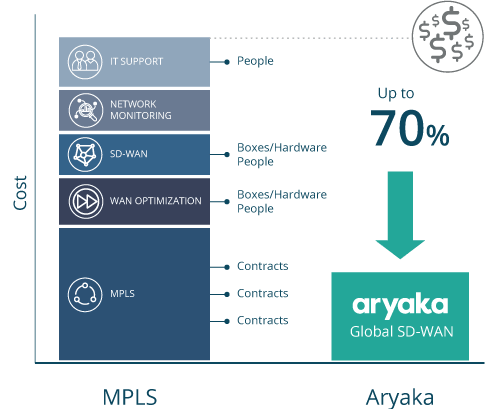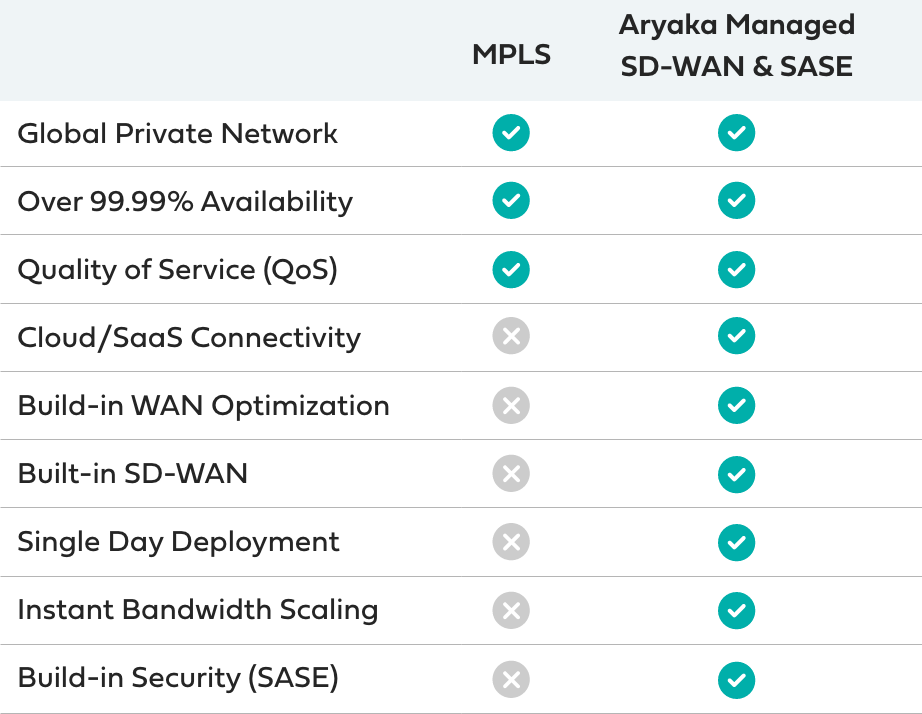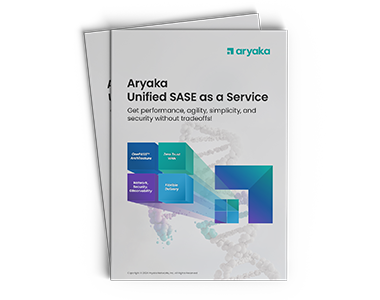Global MPLS Alternatives: What You Need to Know

As we look to the future of business, globalization is not going anywhere. In fact, your company is likely to grow its global footprint in the coming years as more and more organization increase their footprints outside the U.S.
With that in mind, it’s more important than ever to have a network that can keep up with the pace of a truly global business environment. We’ve written before about the current state of enterprise WAN and the pros and cons of SD-WAN; now it’s time to take a closer look at what to consider when evaluating SD-WAN solutions.
Time Is Money
Not only is the market becoming more global, it’s also becoming more competitive. This means that any second in productivity lost to a slow network or poor application performance can impact your bottom line.
This problem is amplified when you have operations in multiple places around the world. For example, a company might be headquartered in the U.S. (as more than a quarter of the top global companies are), but have manufacturing operations in China and sales offices in London and Paris.
Data is constantly moving back and forth between these locations over the company’s global WAN. Delays on these networks can range from 300-350 milliseconds. This might not seem like a lot but it adds up quickly, even taken over the course of a traditional eight-hour workday.
These delays are likely to have an impact on everything from business process to employee satisfaction to customer service if the network can’t keep pace with the demands its users are placing on it. You owe it to your organization, and your customers, to provide a better network alternative.
Some of these same challenges exist for companies that are entirely housed in one place. Information still needs to move from point A to point B, and it might be happening over a hardware-centric network rather than a WAN. Moving to global SD-WAN can provide the feeling of competing on a global scale and give you an advantage over domestic competitors.
Global SD-WAN Features
|
|
|
“ With Aryaka, we’ve measured the impact in terms of costs savings. We’ve saved approximately 2-3 million dollars over a traditional MPLS solution… We’ve also seen a significant increase in file transfers. Anywhere up to 20x increase in speed. ”
Dustin Collins, VP of Global Infrastructure Services, Platform Specialty Products
There are many global SD-WAN options out there, but like a lot of things, not all of them are created equal. Keep these features in mind as you evaluate options for your organization:
Cloud-ready: Everyone works in the cloud these days, and your network shouldn’t be any different. Look for an option that contains cloud and SaaS connectivity as a default.
Embedded WAN Optimization: This feature helps with latency and other performance issues without additional cost to your company.
Streamlined contracts: A global SD-WAN should eliminate the need to work with multiple communication service providers and vendors to put a network in place. The global SD-WAN provider should be your single point of contact for your new network solution.
Short setup time: Your new network should be up and running quickly, and should be able to grow and scale right along with your business.
Total security: Data and information passing through your network should be secure at all times, no matter where it’s going or who has access to it.
Data replication: Storing information in multiple places allows your users to quickly access information no matter where in the world they are located.
End-to-end visibility: No network is going to operate perfectly all the time, so it’s important to have a plan in place to quickly troubleshoot issues when they arise. A built-in platform for visibility can help your IT team quickly identify and solve problems, and create opportunities for strategic planning.
Reduced complexity: A fully-managed WAN solution takes a lot of the maintenance burden off of your organization, which frees up resources to tackle other projects and priorities.
Zero CapEx and Alternatives to MPLS pricing: A global SD-WAN should not sacrifice quality in the name of cost, and should not require any capital expenditures to get up and running.
Learn More
Read Aryaka’s white paper on MPLS alternatives offers additional insight into the current landscape and how to move to a global option, or check out the other reports on all things global SD-WAN.
- Is MPLS dead? Understanding Need For mpls Network Technology
- What is MPLS network & How MPLS Works?
- 4 Reasons Why MPLS No Longer Serves Global Enterprises
- MPLS Network Pros and Cons
- SDWAN over MPLS: Is SD-WAN Better than MPLS?
- 5 Questions MPLS Providers Hope You Won’t Ask
- 3 Simple Ways for Choosing the Right MPLS Alternative
- The Slow Death of MPLS
- Can a Global SD-WAN Replace MPLS Connectivity?




